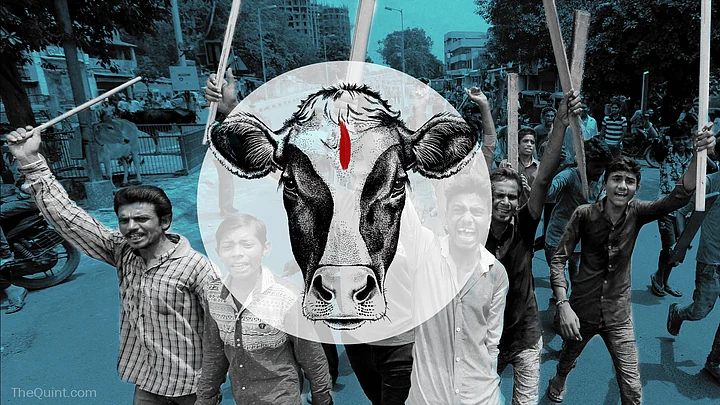Domestic animals, also the key driver of income diversification for farm households in the country in recent years, used to fetch multiple values as provider of milk, meat and as dependable resource for ploughing farms. Since the introduction of tractors made the cattle redundant for farming, the preference for animals offering other values (milk and meat) saw a substantial jump in the last few years.
Data shows that the proportion of males (predominantly used in agriculture) in overall livestock population has been consistently falling.
According to the latest livestock census, while the population of male cattle fell by 13 percent between 2007-2012, that of female cattle rose by an impressive 29 percent in the same period. Farmers, therefore, have already done one round of adjustment by getting rid of male cattle.
Now that there is a well-orchestrated campaign, spearheaded by the guardians of aggressive Hindutva, to strip yet another value – as a source of meat – off the cattle, there is bound to be a massive value erosion, forcing farmers once again to go for painful adjustment. They are doing precisely that by abandoning cattle they cannot use for milk. Uttar Pradesh and neighbouring states are battling the menace of stray cattle as farmers can ill-afford to keep them, owing to the exorbitant cost involved in keeping unproductive animals.
How will it hit the rural economy and what is going to be the potential loss to the country’s Gross Domestic Product (GDP), let us understand the implications with the help of some numbers.
- According to National Dairy Development Board, total cattle population stood at 190 million in 2012. According to a report by The Indian Express, nearly 30 million cattle (or 15 percent of the total cattle population) grow beyond their productive age and hence are rendered unproductive every year. If they cease to have any value as prices of cattle have crashed, farmers have been forced to let to go.
- The cost of keeping 30 million cattle at the rate of Rs 80/per animal/per day comes to Rs 86,000 crore. That is, if governments across the country take the burden of building shelters and keep all the surplus cattle there.
- A 2015 National Council of Applied Economic Research (NCAER) paper says that the growth in livestock has outpaced the overall agriculture growth in the country since the 1980s. As a result, the share of livestock in the agriculture GDP, which stood at just 12 percent in the 1980s, has gone up to nearly 25 percent now. It shows that livestock has been one of the key drivers of rural growth. There is a risk of farmers abandoning the now unprofitable diversification.
- National Dairy Development Board estimates that livestock’s contribution to the country’s GDP is nearly Rs 6 lakh crore per annum. The contribution of cattle alone is estimated at Rs 3 lakh crore. Assuming a value erosion of at least 20 percent, the hit to the rural economy will be to the tune of Rs 60,000 crore. This is happening at a time when farm income has stagnated.
- Restrictive trade of cattle has impacted the hitherto flourishing sectors like leather and meat exports.
- The estimated worth of leather industry is nearly Rs 91,000 crore a year. A 20 percent hit will mean a loss of Rs 18,000 crore every year. Incidentally, the industry has been one of the top 10 foreign exchange earners and is estimated to employ in excess of 2.5 million people. There has been a pledge to double the value of leather exports in the next five years. Reports, however, suggest the sector taking a massive hit in the face of cow vigilantism.
- Meat exports touched Rs 26,000 crore in 2017-18. Since there have been attempts to target the industry, especially in leading meat trade hub of Uttar Pradesh, exports are bound to suffer. A conservative 20 percent hit will mean a loss of nearly Rs 5,000 crore.
- According to reliable estimates, 70 percent of livestock is held by small and marginal farmers and landless labourers. Aggressive Hindutva’s cow obsession therefore has hit the most vulnerable groups the hardest. Is that the reason why the countryside is not very pleased with the ruling establishment?
- UP’s surplus cattle population is estimated at 1 million per annum. This is over and above the already existing surplus cattle of 2 million. The state’s existing network of 514 shelter houses can accommodate not more than half a million cattle. The state therefore is battling stray cattle idling across farms, causing destruction of rabi crops like wheat, mustard and pulses. Farm output is bound to get impacted, further depressing the income of farmers.
- The farm income is stagnating and the attempted diversification is facing a Hindutva roadblock. Is rural India headed for a long spell of burre din?
